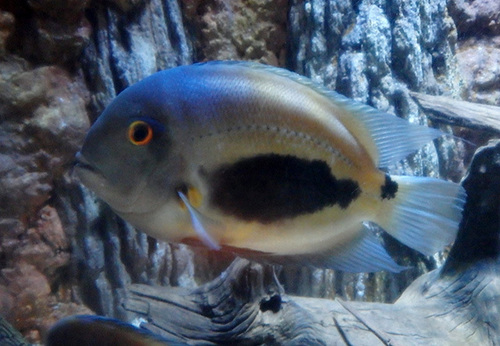
Uaru
Bluefin Tuna are large, powerful, and highly migratory fish belonging to the Scombridae family. Renowned for their size, speed, and commercial value, they are apex predators in the marine ecosystem. There are three main species: Atlantic, Pacific, and Southern Bluefin, each with unique characteristics and conservation statuses.
8 10 years
Lifespan
25 - 30 cm
Length
Least Concern
Conservation Status
N/A km/h
Swimming speed
Omnivorous
Diet
Local Migration
Migration
Appearance Overview
The Bluefin Tuna is renowned for its large, streamlined body, built for speed and endurance in the open ocean.
Color
Dark metallic blue on top with a silvery underside
Fins
Two dorsal fins, the first depressible; small finlets run down the back and belly to the tail
Body shape
Torpedo-shaped, designed for efficient swimming
Length
Up to 13 feet (4 meters)
Weight
Up to 2,000 lbs (907 kg)
Diet
Carnivorous, feeding on fish, squid, eels, and crustaceans
Feeding Behavior
Uses speed to chase down prey, sometimes in coordinated schools, especially when younger
Social Behavior
Forms schools, especially when young; older fish are more solitary or form smaller groups, migratory
Commercial Relevance
Extremely high value, especially in sushi and sashimi markets, where it is considered a delicacy
Conservation measures
Fishing quotas, international agreements, monitoring of catches, and efforts to reduce illegal fishing
Status
Varies by species; Atlantic Bluefin is Endangered, Pacific Bluefin is Near Threatened, Southern Bluefin is Critically Endangered
Threats
Overfishing driven by high demand in the sushi market, bycatch in other fisheries, slow growth rate and late maturity
Habitat Distribution
Depth Range
0-1,000 meters (0-3,280 feet), though they are often found in shallower waters
Geographic Range
Atlantic, Pacific, and Indian Oceans, including the Mediterranean Sea
Preferred Environment
Temperate and subtropical waters, open ocean, often near continental shelves
Reproduction and Life Cycle
Breeding Habits
Spawns in warm waters, with specific spawning grounds like the Gulf of Mexico and the Mediterranean Sea
Development Stages
Larvae hatch in warm waters and grow rapidly, feeding on plankton before transitioning to larger prey
Fecundity
Females can produce millions of eggs per season, releasing them into the water for external fertilization
Maturity Age
Matures at 4-8 years for Atlantic Bluefin, though this varies by species and location
Faqs about Uaru
How long do Bluefin Tuna live?
Bluefin Tuna can live up to 40 years, depending on the species.
How fast can Bluefin Tuna swim?
Bluefin Tuna are among the fastest fish, capable of swimming at speeds up to 43 mph (70 km/h).
Are Bluefin Tuna warm-blooded?
Yes, Bluefin Tuna are warm-blooded, which helps them maintain high speeds and activity levels.
How far do Bluefin Tuna migrate?
Bluefin Tuna migrate thousands of miles for feeding and spawning, often crossing entire oceans.
Why is Bluefin Tuna so expensive?
The high fat content and rich flavor of Bluefin Tuna, particularly the belly meat (toro), make it highly prized for sushi and sashimi.
Are tuna cartilaginous fish?
No they are bony fish.
Copyright @ Nature Style Limited. All Rights Reserved.
 English
English